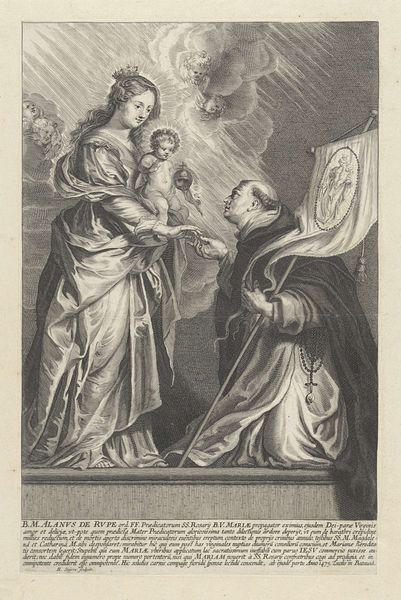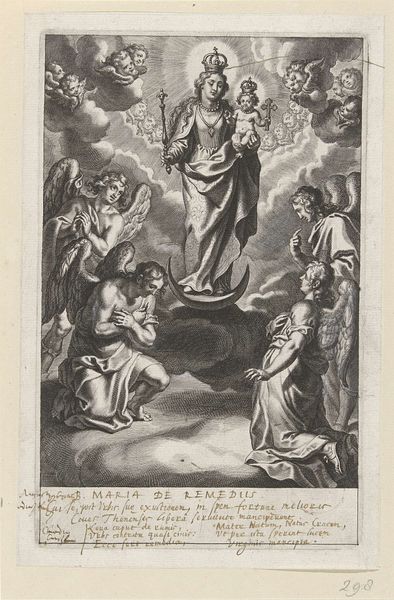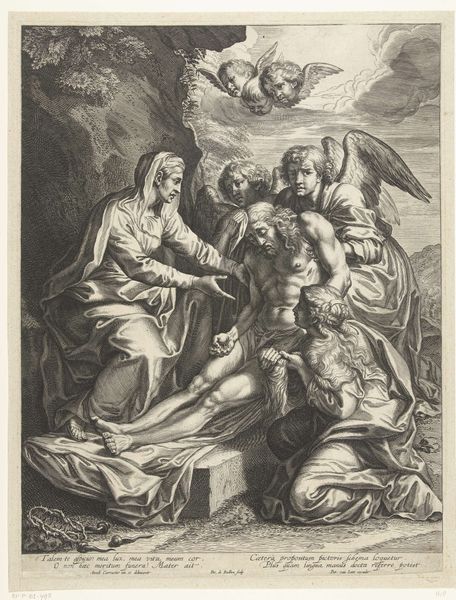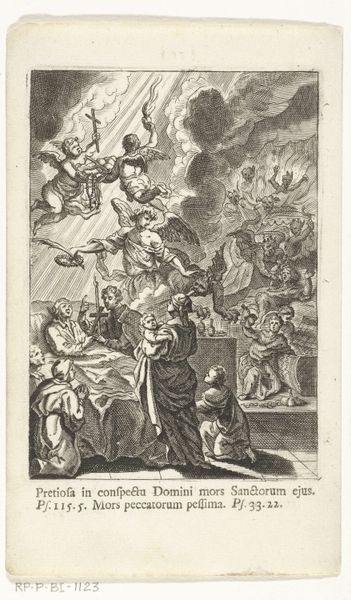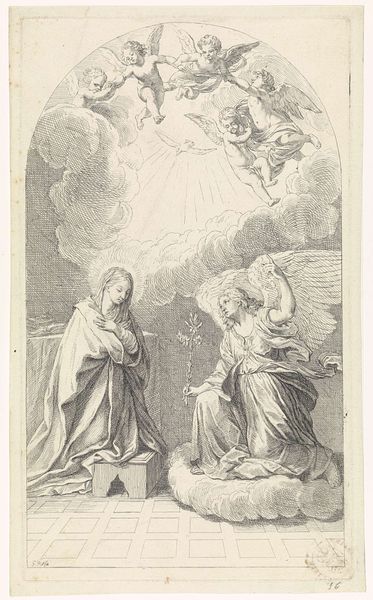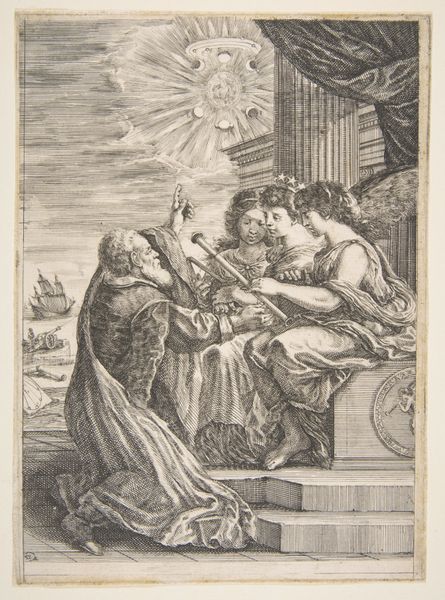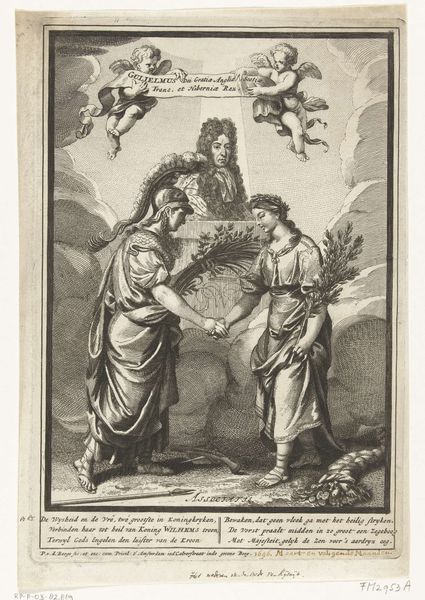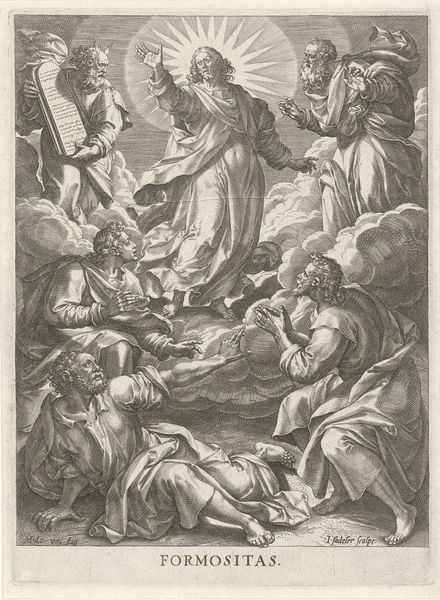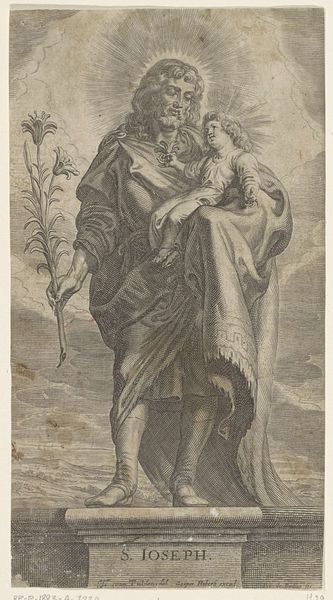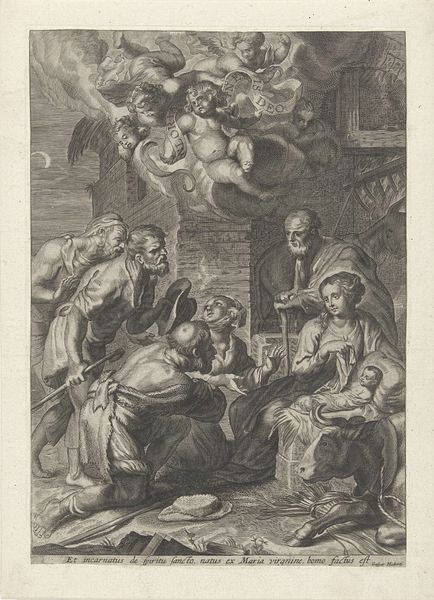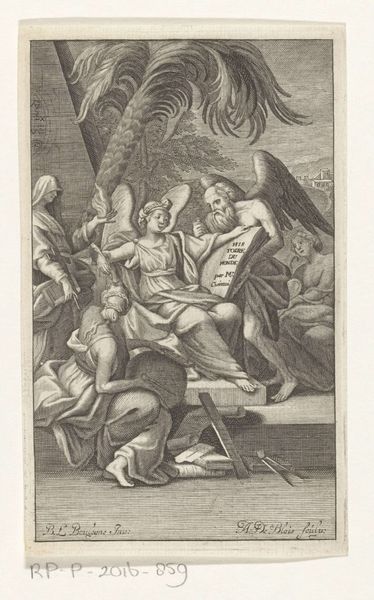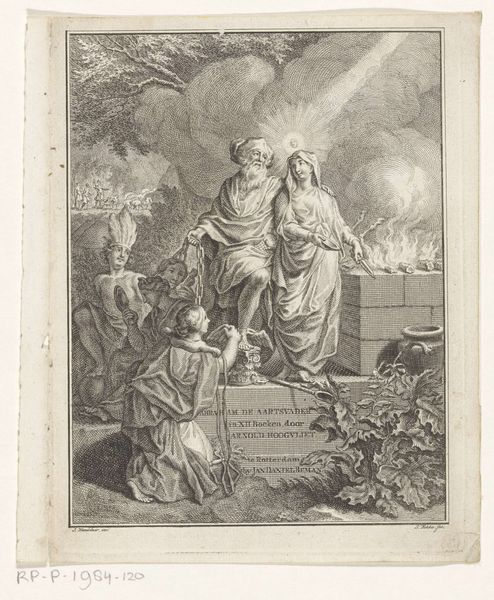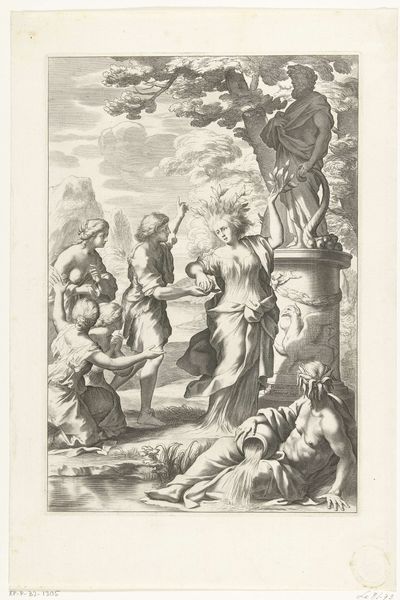
print, engraving
#
baroque
# print
#
figuration
#
line
#
portrait drawing
#
history-painting
#
engraving
Dimensions: height 179 mm, width 118 mm
Copyright: Rijks Museum: Open Domain
Editor: Here we have "The Annunciation," an engraving by Jacob Folkema, created sometime between 1702 and 1767. It depicts the Virgin Mary receiving the angel Gabriel, set within this very Baroque scene. It's striking how the scene, despite its ethereal nature, feels so… grounded, I guess? What’s your take on this work? Curator: It's fascinating to consider this engraving within the context of 18th-century printmaking. Notice the very clear linear work and stark contrasts produced by the engraving, giving it a more "everyday" visual accessible to the masses. How might the availability and cost of paper affect the scale and detail of the work? Editor: So you're saying the economic and material realities influenced the final form? Curator: Precisely. Engravings like this were often made as reproductions of paintings. Do you think the labor and cost involved in producing prints democratized access to art, or just commodified religious narratives? Were these prints used mainly for devotional purposes, or as fashionable decorations for homes? Editor: That's a really interesting point, especially considering the time it takes to create one of these engravings! Seeing it that way, it is a fascinating case study in the industrialization of art through reproducible print. Curator: Indeed. It highlights how even seemingly spiritual art is deeply embedded in the material conditions of its production and circulation. Editor: So much to think about... Thank you. That gives me a whole new angle on appreciating engravings of this period. Curator: And considering these production issues leads to many social issues tied to that time, opening an insightful angle into this beautiful work!
Comments
No comments
Be the first to comment and join the conversation on the ultimate creative platform.
